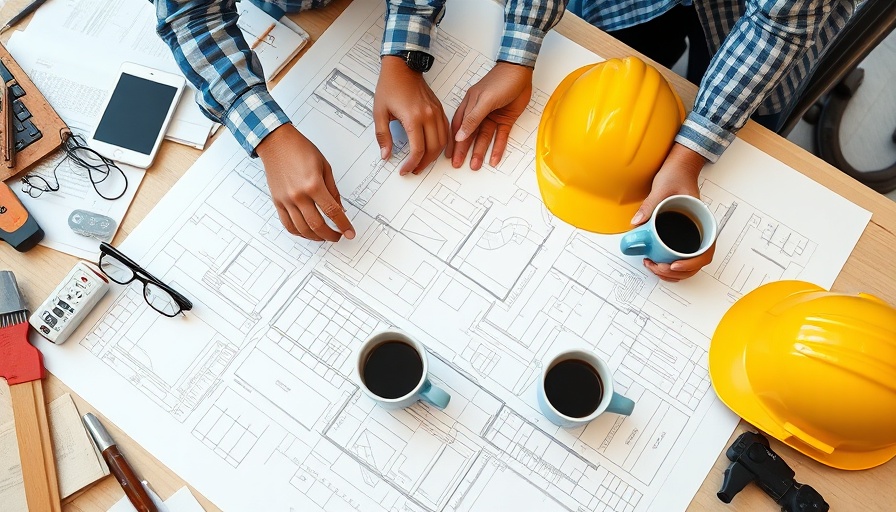
Streamlined Efficiency in Commercial Construction: The Design-Build Advantage
The design-build approach has transformed commercial construction, merging design and construction into one cohesive process. This innovative strategy is gaining traction due to its ability to save significant time and costs, allowing businesses to enhance project outcomes while minimizing headaches traditionally associated with construction projects.
Understanding the Design-Build Method
Rather than separating responsibilities across multiple contractors (as commonly seen in traditional construction), design-build integrates all elements from design through construction under a single entity. This leads to better communication and collaboration among team members, making it easier to align project goals while maintaining cost efficiency. The seamless workflow has demonstrated an ability to complete projects up to 33% faster than conventional methods, making it a vital strategy for businesses looking to expedite their construction timelines.
The Financial Benefits of Choosing Design-Build
One of the most significant advantages of the design-build method is its cost-saving potential. By involving experts in design and construction from the start, budget management becomes more effective as stakeholders can anticipate expenses and pinpoint areas for cost reductions. A report by the Design-Build Institute of America highlights that design-build projects often incur fewer costs compared to traditional projects, primarily due to efficient resource use and early identification of financial risks.
Accountability also plays a crucial role in controlling costs. Since a single entity oversees the entire project, clients benefit from a clear point of responsibility, minimizing disputes that often arise between separate contractors. This unified approach ensures decision-making is swift, reducing delays that typically inflate project costs.
Improved Communication Equals Faster Projects
With everyone involved in the project operating under a single contract, communication becomes much clearer. Team members are more likely to collaborate and solve issues on the spot, avoiding the bottlenecks that usually slow down traditional construction projects. This dynamic encourages creativity as ideas can be exchanged unencumbered by bureaucratic delays.
Enhancing Quality at Every Stage
The integration of design and construction also facilitates tighter quality control. When a single team manages both functions, they are more likely to take ownership of the project’s outcome. This heightened accountability ensures that quality standards are maintained throughout every phase, thereby reducing the number of mistakes and reworks.
Flexibility to Adapt and Innovate
One defining feature of design-build is its flexibility. Given that the same team oversees the project from inception to completion, adjusting to new information or changing client needs becomes more manageable. This adaptability is essential in construction, where unforeseen challenges often surface.
Moreover, the innovative spirit fostered through collaboration allows for unique design solutions that may not have surfaced in a traditional setup. The design-build teams work together to propose creative options that cater to specific user needs while remaining within budget.
Building Lasting Relationships with Clients
Another underrated benefit of design-build construction is its focus on building strong relationships with clients. Regular updates and consultations included in the process involve clients in decision-making, ensuring their vision is brought to life. This transparency cultivates trust and satisfaction, which are critical components in delivering successful projects.
Conclusion: The Future of Commercial Construction
As commercial construction evolves, the design-build method presents an efficient, cost-effective, and high-quality alternative to traditional practices. For homeowners and developers on St. Simons Island, Jekyll Island, or beyond, this approach can greatly enhance their construction experience, making it more streamlined and enjoyable.
If you’re considering a renovation or new build, consider leveraging the advantages of the design-build approach to ensure you receive the optimal balance between quality, cost, and delivery time for your project.
 Add Row
Add Row  Add
Add 




Write A Comment